Fermenting Beer with Mangrove Jack's M41 Belgian Ale Yeast
Published: September 24, 2025 at 3:32:15 PM UTC
Last updated: September 25, 2025 at 6:06:58 PM UTC
Mangrove Jack's M41 Belgian Ale Yeast is a dry, top-fermenting strain available in 10 g packets, priced around $6.99. Homebrewers often choose this yeast for its ability to mimic the spicy, phenolic complexity found in many monastic Belgian beers. It has shown high attenuation and strong alcohol tolerance in trials, making it ideal for Belgian Strong Golden Ales and Belgian Strong Dark Ales.
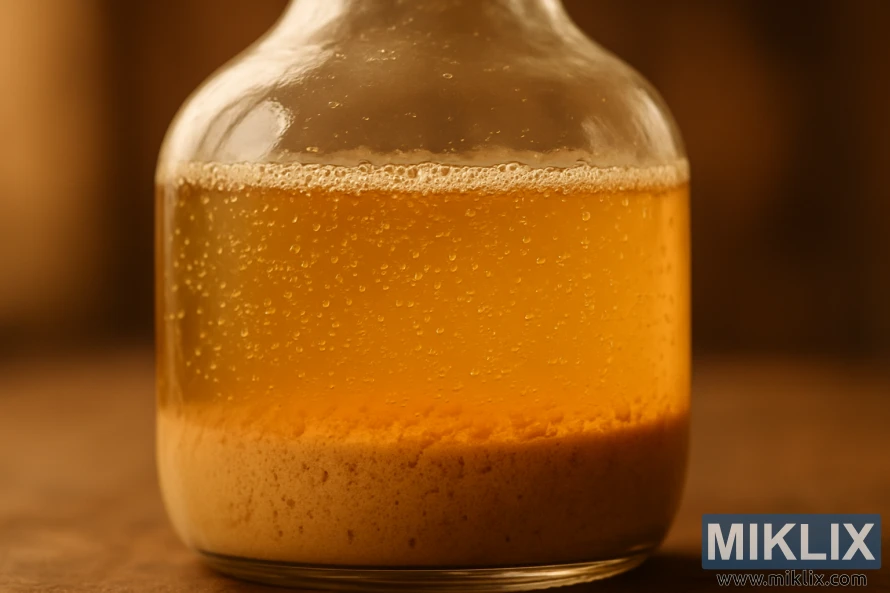
This M41 yeast review delves into its practical brewing applications. When fermenting Belgian ale, expect pronounced clove and pepper notes, along with a firm, dry finish. This finish accentuates malt and hop choices. As part of Mangrove Jack's yeast family, M41 offers a distinct profile for brewers aiming for traditional Belgian character without the complexity of a liquid culture.
Key Takeaways
- Mangrove Jack's M41 Belgian Ale Yeast comes in 10 g dry packets and suits high-ABV Belgian styles.
- Produces spicy, phenolic notes and high attenuation for a dry, complex finish.
- Works well for Belgian Strong Golden and Dark ales when pitched and temperature-controlled.
- Part of Mangrove Jack's commercial dry yeast range, providing consistency for homebrewers.
- Offers robust alcohol tolerance, enabling thicker wort ferments and higher OG recipes.
Why Choose Mangrove Jack's M41 Belgian Ale Yeast
Mangrove Jack's M41 brings a spicy, phenolic character reminiscent of traditional monastic Belgian ales. Brewers often seek this yeast for its clove-like phenol and soft peppery spice. These traits are perfect for Belgian dubbel, tripel, or golden strong ales.
M41 yeast benefits include high attenuation and solid alcohol tolerance. These features make it versatile for both lighter, hop-forward Belgian styles and darker, malt-rich strong ales. It ensures a drier finish than expected.
- Authentic aroma and flavor for Belgian recipes
- Wide fermentation range that supports ester development
- Reliable dry-packet convenience for homebrewers
For those on a budget, M41 is available in 10 g dry packs at a price around $6.99. This affordability is a big part of its appeal for those looking for the best yeast for Belgian ales without breaking the bank.
Mangrove Jack's is known for its specialized yeast strains, adding to the confidence in choosing M41. The brand offers targeted ale yeasts across various styles. M41 is the ideal choice for those seeking classic Belgian complexity without the hassle of extensive yeast handling.
Understanding Spicy and Phenolic Yeast Characteristics
Brewers describe "spicy" as the aromatic result of phenolic compounds and spicy esters created by yeast. These notes range from clove-like and peppery to a warming baking spice. When present at balanced levels, they add depth without masking malt or hops.
Phenolic yeast characteristics come from specific biochemical pathways. These pathways produce compounds such as 4-vinyl guaiacol. This molecule contributes the classic Belgian-monastic clove and spice profile found in many traditional ales.
Mangrove Jack's M41 delivers a mix of spicy yeast esters and Belgian yeast phenols. This mix can mimic the complexity of abbey and Trappist-style beers. Fermentation temperature, pitching rate, and oxygen management shape how dominant these traits appear.
- Lower temperatures favor fruity esters over sharp phenols.
- Higher temperatures tend to increase spicy yeast esters and accentuate phenolic notes.
- Yeast health and pitch size moderate expression of Belgian yeast phenols.
For styles like Belgian Strong Golden and Belgian Strong Dark Ales, these yeast-driven flavors are desirable. The spicy and phenolic elements balance rich malt, high alcohol, and residual sweetness. This creates a layered sensory profile.
When formulating a recipe, taste early and often. Adjust fermentation conditions to dial in the ideal balance between fruity esters and phenols. This will help you craft the beer you want.
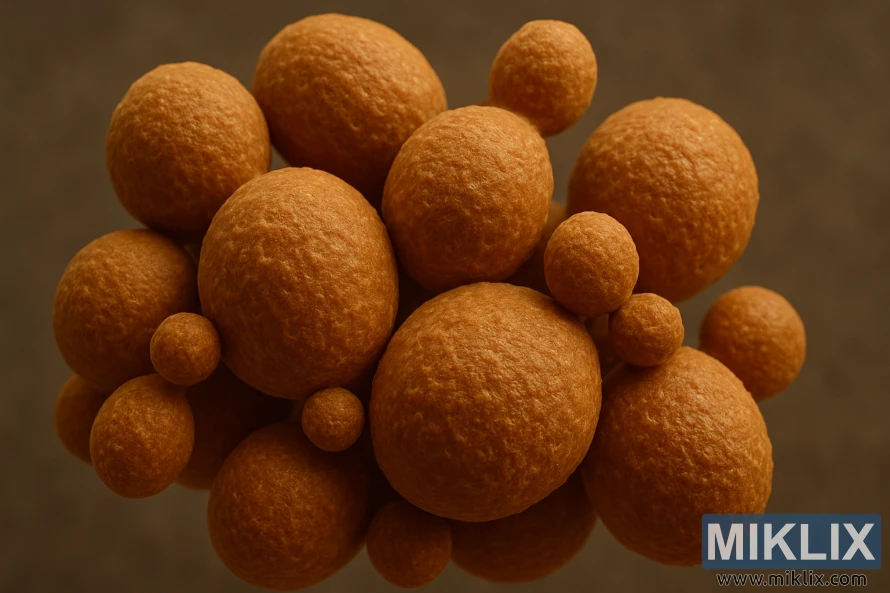
Key Specifications: Attenuation, Flocculation, and Tolerance
Mangrove Jack's M41 Belgian ale yeast is known for its high fermentability. It consumes sugars robustly, leaving a drier finish in Belgian strong ales. Adjust your original gravity and residual sweetness to prevent a thin mouthfeel.
Flocculation is at a medium level, meaning clarity will take time. Allow for extra conditioning and cold-crash periods for a clearer pour. If you need crystal-clear beer, consider filtering or extended lagering.
M41 has a high alcohol tolerance, ideal for high-ABV recipes. It can handle robust strengths without early fermentation stress. Proper nutrient management and staggered feeding are key to keeping yeast healthy in big beers.
These specifications guide practical brewing decisions. Use M41's attenuation to reduce residual sweetness in dry recipes. Rely on its flocculation info for conditioning and packaging planning. Trust its alcohol tolerance for fortified Belgian styles or long ferments.
- Adjust mash profile and starting gravity for high attenuation.
- Schedule at least two to four weeks of conditioning for improved clarity.
- Increase yeast nutrients and oxygenation for high-ABV batches.
Fermentation Temperature Range and Control
Mangrove Jack's M41 excels when fermented between 18-28°C. This range, equivalent to 64-82°F, optimizes the balance of esters and phenolics. It allows brewers to fine-tune the beer's aroma and mouthfeel without stressing the yeast.
Lower temperatures, around the mid-60s Fahrenheit, highlight fruity esters and soften phenolic spice. Brewers seeking a subtle clove and gentle banana presence should aim for the cooler end of the spectrum.
On the other hand, temperatures in the high 70s and low 80s enhance spicy phenolics and complex esters. Warmer temperatures accelerate yeast activity, potentially improving attenuation. Yet, they also increase the risk of solvent-like fusels if yeast health is compromised.
- Use a brew fridge or fermentation chamber for steady control.
- Apply a heat wrap or controller for gradual warm-up to increase attenuation safely.
- Monitor ambient and wort temps with a probe to avoid spikes during 64-82°F fermentation.
When fermenting at 18-28°C, ensure proper wort oxygenation, pitching rate, and nutrient levels. Healthy yeast can handle this range, converting sugars efficiently. Poor nutrition or underpitching at higher temperatures, though, can lead to off-flavors.
For high-ABV Belgians, consider stepwise temperature ramps to enhance attenuation while minimizing harsh byproducts. Begin with cooler temperatures for clean ester development, then gradually increase to finish sugars without inducing hot fusels.
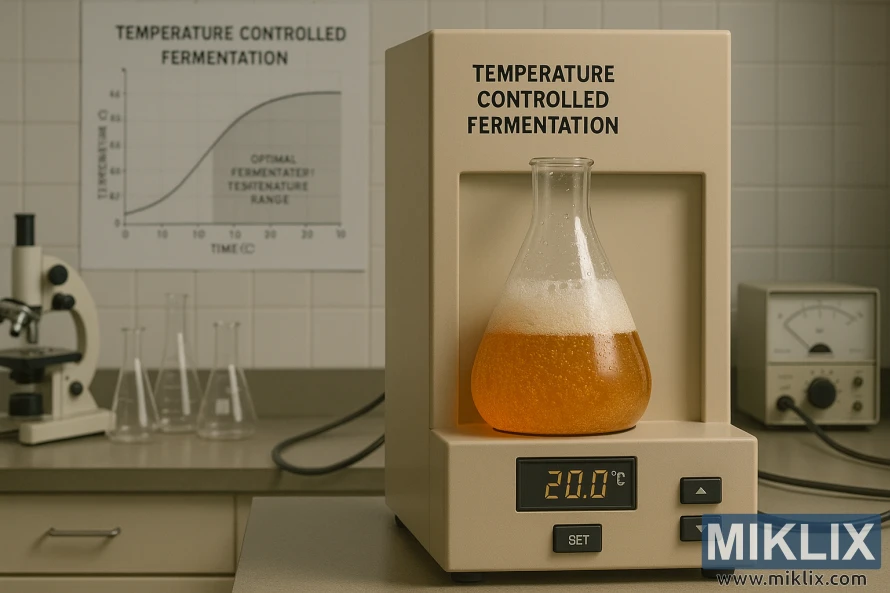
Pitching and Usage Directions for Best Results
Mangrove Jack's suggests a straightforward method: simply sprinkle the 10 g packet over up to 23 L (6 US gal) of cooled wort. This approach is ideal for most standard-gravity Belgian ales, streamlining the brew day process.
For beers with higher gravities or those brewed in hot climates, consider using rehydration or a starter. This step increases cell counts and viability. It's essential to understand the M41 pitching rate to determine when additional yeast is needed to prevent slow fermentation.
Before adding yeast, ensure the wort is well-oxygenated. Adequate oxygen supports yeast growth, critical for high-ABV beers. Maintain strict sanitation and pitch within the 18–28°C (64–82°F) temperature range for optimal fermentation and flavor.
- One 10 g packet covers up to 23 L (6 US gal) under normal gravity.
- Use multiple packets or a starter for fast, vigorous fermentations or very high OG beers.
- If you choose rehydration, follow the yeast supplier's rehydration steps to protect cell membranes.
Monitor fermentation activity within the first 24–72 hours. If fermentation is sluggish, check if initial oxygenation, pitch timing, or M41 pitching rate was sufficient. Adjust your approach for future batches based on this batch's performance to achieve consistent results with M41.
Recipes and Styles That Showcase M41
Mangrove Jack's M41 excels in high-gravity Belgian styles. Choose between a Belgian strong golden or dark recipe based on your flavor preferences. M41 yeast contributes spicy phenolics and high attenuation, so adjust your malt bill to complement its characteristics.
For a Belgian strong golden, start with Pilsner malt and add Vienna or Munich for body. Incorporate light candi sugar or sucrose to enhance fermentables and maintain a bright beer. Opt for noble or low-resin hops like Saaz or Hallertau for subtle bitterness and minimal aroma.
In a Belgian strong dark, use darker malts such as biscuit, aromatic, and a small amount of Special B or dark candi sugar. These malts introduce caramel, raisin, and toffee flavors that the yeast will enhance with spice. Keep the hopping minimal to allow malt and yeast to shine.
When brewing with M41 yeast, consider its high attenuation. To maintain perceived sweetness, include dextrin-rich malts or slightly increase mash temperature to produce more unfermentable sugars. Flaked oats or wheat can enhance mouthfeel without overpowering yeast character.
Control body by planning mash and fermentation steps. A mash temperature of 154–156°F will yield more dextrins for balance. During fermentation, target the M41 range and allow a moderate diacetyl rest if necessary to round out flavors.
- Example target for a golden strong: 70–80% Pilsner, 10% Vienna, 5% sugar, noble hops, OG 1.080–1.095.
- Example target for a dark strong: 60–70% base malt, 15% specialty malts, 5–10% dark candi, minimal hop bitterness, OG 1.090–1.105.
Hops should support the beer's character. Use late kettle or minimal dry hops to enhance esters and phenols. Let the yeast's spice and banana-like notes lead, with hops providing structure and balance.
Adjust carbonation and conditioning to suit the style. Higher carbonation is ideal for a Belgian strong golden, while slightly softer carbonation suits a dark recipe. Test small batches to refine recipes and adjust mash temperatures, sugar additions, and hop choices.
Fermentation Timeline and Signs of Healthy Activity
Mangrove Jack's M41 starts quickly. In typical ale temperatures, the first 48–72 hours are the peak of yeast activity. Warmer temperatures, around 24–28°C, speed up this phase, reducing the time visible signs of fermentation last.
Early signs include a thick krausen and steady airlock bubbling. As activity slows, trub formation and yeast drop-off occur. M41's medium flocculation means some yeast stays suspended longer, delaying clarity.
- Day 1–3: Vigorous bubbling, rising krausen, rapid gravity drop.
- Day 4–10: Krausen collapses, airlock slows, gravity approaches terminal readings.
- Week 2+: Conditioning, yeast clean-up, flavor rounding and clarity improvements.
Monitor specific gravity to track progress. M41's high attenuation means aiming for a lower final gravity than many ales. Regular readings help ensure fermentation stays on the M41 timeline or if adjustments are needed.
Look beyond bubbles for yeast activity signs. Smell, krausen texture, and sediment patterns confirm a healthy ferment. In high-ABV batches, fermentation can be longer, so allow extra time before packaging to avoid over-attenuation surprises.
After primary fermentation, allow for adequate conditioning. This period helps tame harsh esters and phenols, allowing suspended yeast to settle. Patience is key for achieving balanced flavors and visual clarity with M41.
Managing Esters and Phenols for Balanced Beers
Temperature is key in controlling esters and phenols during fermentation. For a milder phenolic taste and less esters, aim for the lower end of Mangrove Jack's M41 range, around 64–68°F (18–20°C). If you prefer a stronger clove and spice flavor, ferment at the higher end of this range.
The composition of your wort also influences yeast flavor expression. Higher mash temperatures result in more dextrins, adding body and potentially softening sharp phenolics. On the other hand, a wort that ferments more easily will dry the beer, making esters and phenols more noticeable.
Oxygenation and the initial yeast count are critical for yeast health and consistency. Adequate oxygen and a sufficient cell count help avoid stress that can lead to unpredictable ester swings. For high-gravity beers, consider rehydrating the yeast or creating a starter to better manage esters and phenols throughout the batch.
Post-fermentation steps are essential for integrating flavors and reducing harsh notes. Cold conditioning for weeks allows yeast to settle and phenolics to mellow, reducing off-flavors without losing desired spice. Gentle handling during transfers helps maintain clarity and low suspended particles.
- Target 64–68°F for subtle phenolic character.
- Use higher mash temps to add body and soften sharp phenols.
- Ensure proper oxygen and pitch for steady ester production.
- Cold condition to reduce phenolic off-flavors and settle flavors.
To finely tune Belgian yeast phenols, adjust fermentation temperature, mash temperature, oxygen, and pitch, and then allow for cold storage. Each adjustment influences the balance between fruity esters and spicy phenols, ensuring your beer meets your vision.
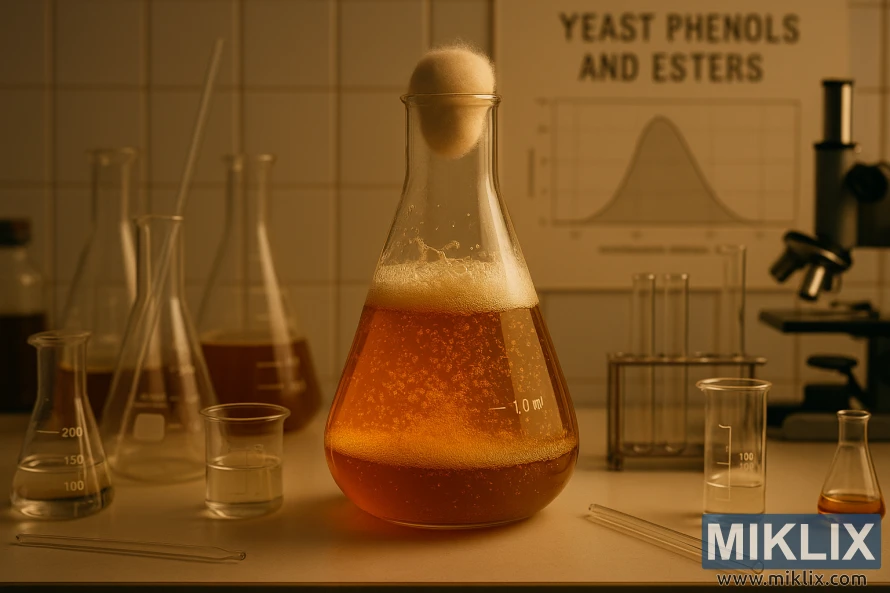
Alcohol Strength: Brewing High-ABV Belgian Beers
Mangrove Jack's M41 is celebrated for its high attenuation and robust fermentation. This makes it ideal for brewing high ABV beers while maintaining the classic Belgian character. It can handle elevated sugar levels, supporting the development of spicy phenols and fruity esters. These are key characteristics of tripels and Belgian strong ales.
To successfully brew high ABV beers, focus on proper oxygenation and staggered nutrient additions. Begin with a healthy starter or multiple pitchings to ensure sufficient cell counts. The yeast's high alcohol tolerance allows it to ferment in higher ABV ranges. It performs best when provided with oxygen early and regular nutrient boosts.
High attenuation can result in a drier finish. To achieve more body, consider adding dextrin malts, specialty CaraMunich, or unfermentable sugars like lactose or maltodextrin. These ingredients balance the drying effect while preserving the yeast's spicy profile.
Manage fermentation temperature towards the upper end of the recommended range for robust attenuation. Then, allow the beer to condition slowly. Warm primary fermentation promotes complete attenuation, and extended aging softens harsh alcohol and phenols. This method leverages M41's alcohol tolerance, resulting in a smoother final product.
Practical steps for high-ABV brews:
- Oxygenate wort thoroughly before pitching.
- Use staggered nutrient additions during active fermentation.
- Pitch a strong starter or perform multiple pitchings for high gravity worts.
- Add dextrins or specialty malts to retain body when high attenuation occurs.
- Condition for several weeks to months to round off alcohol heat and phenolics.
Comparing M41 to Other Mangrove Jack's Strains
Brewers select yeast to influence aroma, flavor, and texture. In a direct comparison, M41 stands out for its distinct spice and phenolic characteristics. This contrasts with M31, which is known for its high attenuation and bright esters, perfect for tripel-style beers.
The comparison between M41 and M31 reveals differences in attenuation and purpose. M41 offers traditional monastic phenolics with medium flocculation. On the other hand, M31 is geared towards drier finishes and high alcohol content, ideal for strong golden ales.
When comparing M41 to M47, a different balance is observed. M47 is fruitier with fewer phenols and stronger flocculation. It's best for achieving a softer abbey profile. In contrast, M41 is preferred for its peppery phenolics and spicier backbone.
Fermentation behavior varies across the Mangrove Jack's range. Strains like M29 emphasize farmhouse and saison notes with peppery accents and high attenuation. Others, such as M44 and M54, focus on hop clarity or lager characteristics. This diversity allows brewers to find the perfect strain for their style.
- M41: spicy, phenolic, medium flocculation, high attenuation.
- M31: tripel-focused, very high attenuation, estery and warming.
- M47: fruit-forward, fewer phenols, high flocculation.
For achieving classic monastic phenolics in dubbels and darker abbey ales, M41 is the choice. M47 is better suited for fruitier abbey styles with cleaner finishes. M31 is ideal for tripels that highlight alcohol, spice, and ester interactions.
Remember this Mangrove Jack's strain comparison when planning your recipes. The strain you choose impacts fermentation behavior, attenuation targets, and final flavor. Selecting the right yeast ensures predictable results and clearer stylistic expression.
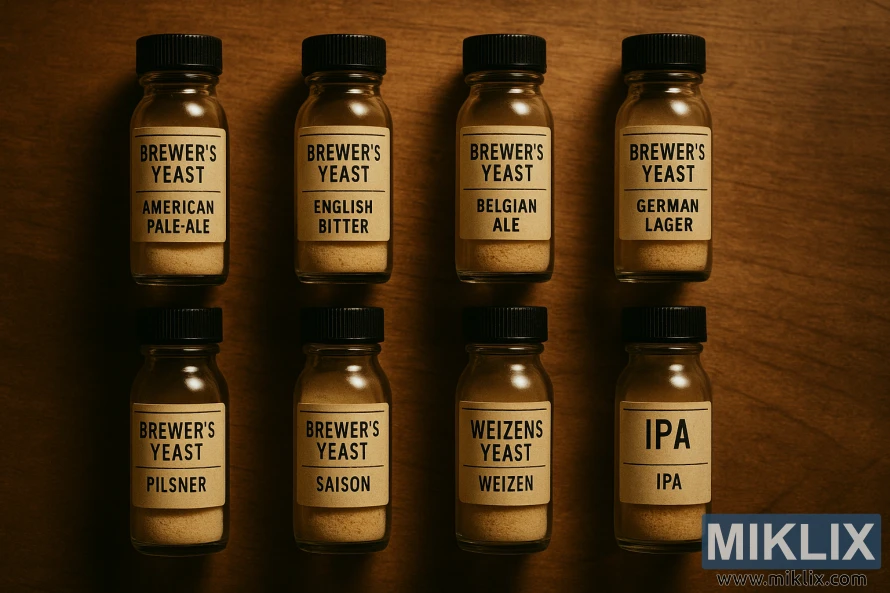
Practical Packaging, Conditioning, and Serving Tips
When packaging Belgian strong ales brewed with Mangrove Jack’s M41, confirm gravity readings are stable for three days. M41 exhibits very high attenuation and medium flocculation. This means you should prime carefully to avoid overcarbonation. Use tested priming rates for high-ABV beers and consider kegging with CO2 as a safer option.
For conditioning M41 beers, plan extended aging. High alcohol and complex phenolics need time to mellow and blend. Store bottles or kegs in a cool dark place at cellar temperatures for weeks to months. This depends on ABV and flavor goals.
Cold crashing or extended lagering aids clarity. If you want a bright pour, lower the temperature for several days before packaging. This helps medium-flocculating yeast drop out and reduces yeast haze.
- Check residual gravity before bottling to prevent bottle bombs.
- Allow at least four to eight weeks for strong golden ales to integrate flavors.
- For darker Belgian strong ales, consider three to six months for peak balance.
When serving Belgian ale, choose glassware that traps aroma and shows the head. Tulip or goblet glasses concentrate esters and phenolics while allowing a generous rim of foam. Pour gently to present the complex bouquet and yeast-derived character.
Store packaged Belgian strong ale in a cool, dark spot to preserve hop and yeast aromatics. High alcohol acts as a preservative, so these beers age well if kept steady and away from light and heat spikes.
Troubleshooting Common Fermentation Issues with M41
Addressing M41 fermentation problems requires a systematic approach. Hot temperatures can lead to harsh phenolics or solvent-like fusel notes. Moving fermenters to a cooler location and adjusting ambient control are essential. A slight decrease in temperature can help mitigate excessive spiciness from Belgian yeast.
Under-attenuation, though rare, can occur. Factors like poor aeration, low pitching rate, or cold wort can slow activity. Proper yeast rehydration, using a starter for high-gravity brews, or adding yeast nutrient can address these issues effectively. These steps are designed to resolve Belgian yeast problems without extreme measures.
- Slow or stuck fermentation: oxygenate wort early, add staggered nutrient doses, and confirm pitching rates.
- High-gravity batches: consider a larger starter or multiple Mangrove Jack's packets to prevent stalls.
- Temperature stress: cool the fermenter and keep temperatures steady for predictable ester and phenol profiles.
For stuck fermentations, monitor gravity daily. If gravity stalls, gently rouse yeast by swirling or raising temperature a few degrees for 24–48 hours. If gravity remains fixed, repitch healthy yeast from a robust strain or fresh M41. This approach helps restart activity and minimizes off-flavor risks.
Clarity and flocculation can be concerns for brewers aiming for crystal-clear beer. M41 exhibits medium flocculation, so patience and time improve clarity. Cold conditioning and the use of finings like gelatin or isinglass can accelerate settling. Patience is often the key to achieving clarity when troubleshooting.
- Confirm fermentation temperature and adjust to the recommended range.
- Verify oxygenation and pitching rate; prepare a starter for big beers.
- Add yeast nutrient in stages for tougher ferments.
- Cold condition and use finings to clear haze.
Keeping detailed logs of temperature, gravity, and timing is vital. These records facilitate faster troubleshooting and enhance confidence in addressing Belgian yeast issues with Mangrove Jack's M41.
Conclusion
Mangrove Jack's M41 Belgian ale yeast is a cost-effective, versatile choice for brewers. It brings spicy, phenolic complexity to beers. It also offers very high attenuation and strong alcohol tolerance. This yeast excels in Belgian Strong Golden and Dark Ales, where its monastic character and dry finish can truly shine.
To get the most out of M41, follow the manufacturer's pitching guidelines. You can pitch up to 23 L (6 US gal) or consider rehydration or a starter for high-gravity batches. Keep fermentation temperatures between 18–28°C (64–82°F) to control ester and phenol expression. Adjust mash and recipe to counteract the dryness from high attenuation.
Using Mangrove Jack's M41 requires careful planning. Allow for adequate conditioning and be mindful of packaging. Employ fermentation control to balance the complexity. With deliberate use, M41 delivers a distinct Belgian profile. It rewards careful process choices, making it a strong pick for traditional Belgian-style brews.
Further Reading
If you enjoyed this post, you may also like these suggestions:
- Fermenting Beer with White Labs WLP802 Czech Budejovice Lager Yeast
- Fermenting Beer with Wyeast 2000-PC Budvar Lager Yeast
- Fermenting Beer with CellarScience Origin Yeast
